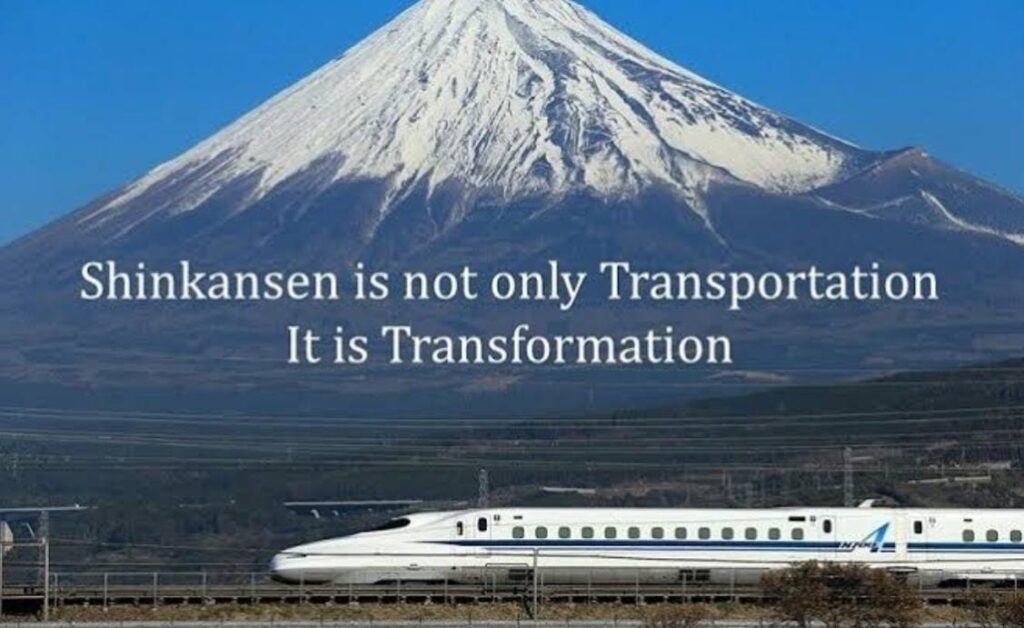29th September, 2023
In the midst of the post-war economic miracle, the Japanese government issued direct orders to JR (Japan Railways) to find a quicker way to connect Tokyo with Osaka.
A few months later, the JR engineers presented a proposal for a train that would travel at an average speed of 100 km/h.
This was a breakneck speed for the time, but the JR executives’ response was utterly unexpected: “We need a train that goes twice as fast.”
The engineers were utterly astonished & said it was absolutely impossible to achieve that; a 200 km/h train belonged to the realm of science-fiction movies.
The Govt replied that they could spend as much money as they wanted & gave them carte blanche for that seemingly impossible project.
The engineers came back a few months later with a new proposal that implied a comprehensive change in all aspects of the future train. To achieve such an outrageous speed, they would need to:
- Change the shape, height and width of the railway tracks that had been used up until then in Japan.
- Spend a large part of the budget on making tunnels to cross the mountainous area around Mount Fuji.
- Completely redesign the concept of “a train” that people had at that time in order to come up with a lighter and more aerodynamic one and thus overcome air resistance.
Essentially, it would have been enough to carry out one or two improvements to gain 10 km/h, but to double the speed you had to change everything & approach this mode of transport with an entirely new way of thinking.
This radical change, the Shinkansen effect, is widely used in engineering & business, but we can also apply to all the “divisions” of our life.
To come back to the engineers’ “almost impossible mission,” in 1964— just 6 years after the government had thrown the challenge—the first bullet train in history was inaugurated for the Tokyo Olympics.
Achieving a milestone that caused astonishment around the world, the Shinkansen connected Tokyo to Osaka at more than 200 km/h, cutting down the journey time between the two cities from 6 hours 40 minutes to 3 hours 10 minutes.
The first step towards that great breakthrough came about when an entirely new way of thinking was adopted.
Eiji Mikawa, the Tokyo head of GE was fond of talking about how “bullet train thinking” was applied to everything in his company. For example, if the directors in one of his divisions told him they were planning to reduce costs by 5%, he would ask them to think of ways to reduce them by 50%.
Jack Welch was so impressed by Mikawa’s approach that he imported the philosophy & applied it to GE where he asked all his employees & divisions to add “bullet train objectives” to their quarterly reviews.
“If you have an objective, you think you are going to reach in ten years, the best strategy to make it happen uujis to think about how you can manage to reach the same objective in one year.”
The companies or people that set “bullet train objectives” tend to end up standing out in our society.
Elon Musk resolved to undertake what was in many people’s view the “crazy idea” of building rockets capable of taking off and landing; with his private company Space X he duly accomplished in less than 10 years something that NASA had not managed to do in over 50 years of R & D.
Elon Musk has also designed the hyperloop, a land transport system that could reach speeds of 1200 km/h and, as a personal bullet train objective, he aims to send the first human to Mars.
In which area of your life do you want to apply the Shinkansen effect?
For a dream or aspiration to deserve this label, it has to be seemingly impossible to achieve. If you feel you can achieve it relatively easily, it cannot be classed as a “bullet train objective.”
Get started now, adopt the Bullet Train objective & stay blessed forever.

